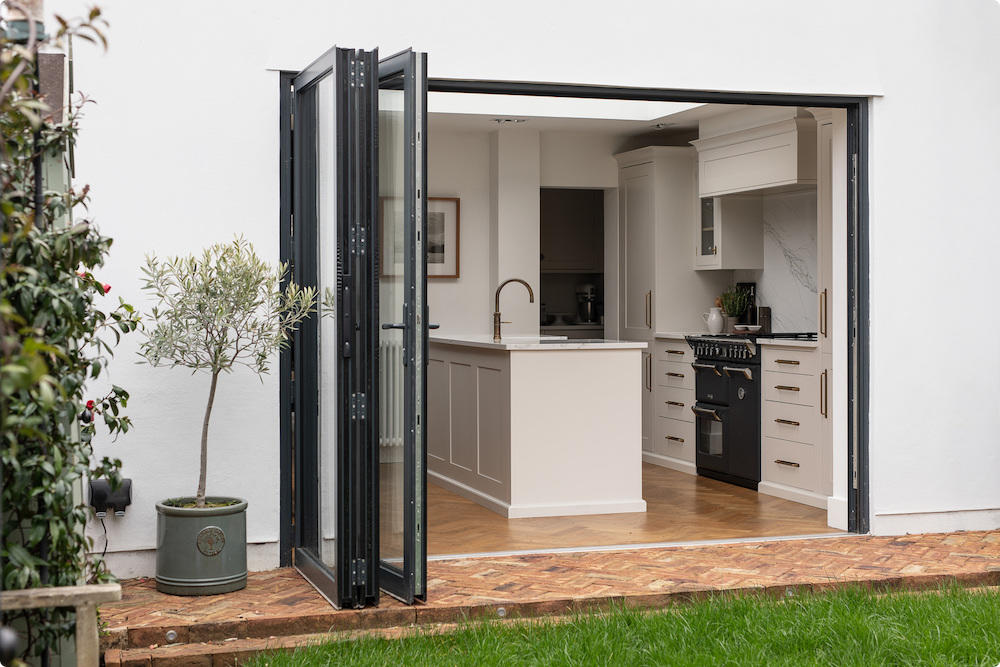When it comes to your own renovation or extension plans, we’d always advise a healthy sense of curiosity about whether your neighbours have got work done on the house or how they went about it.
However, while it can sometimes serve as a helpful roadmap for how to get your own project approved, it doesn’t necessarily mean that you’ll be as fortunate. We discuss why you shouldn’t bank on your neighbours’ build and how to give your plans the best chance of going through.
The Permitted Development myth
Despite common misconceptions, you may not necessarily be able to gain permission for certain renovations or house extensions under Permitted Development just because your neighbours have done the same. There are a number of factors that can impact this. For example, even if your neighbour is two streets away, they could fall into an entirely different set of rules to you. This can include being within a Greenbelt boundary, a Conservation Area or an Area of Outstanding Natural Beauty. In some circumstances, people may proceed with their project plans under what they believe to be Permitted Development rights but are often not.
In these circumstances, it would make the build unlawful and could cause you a number of problems later down the line (even as far as having to reverse the works done!). To avoid any bad surprises, find out whether or not you need to file a full planning application or whether you can proceed with your build under Permitted Development rights.
How to find out if you need planning permission
If you believe that your proposed project falls under Permitted Development rights, you’ll need to confirm this by contacting your Local Planning Authority (LPA) and applying for a Lawful Development Certificate. This essentially acts as proof that, at the time of your building work, the construction was law-abiding. This could be particularly important later down the line if you’re trying to sell your property.
If you have further questions about whether or not you might require Planning Permission and why, book a free advice call with our in-house Planning team. They have years of experience behind them and our 91% planning approval rate is a testament to their expertise.
 © Matt Gamble
© Matt Gamble
How to give yourself the best chance of getting planning permission
If your proposed ideas don’t fall under Permitted Development, don’t despair. There’s still a good chance that, with the right approach, your plans will be accepted and your build will be able to go ahead. Here are some of our top tips for securing Planning Permission.
Speak to your neighbours
Establishing a good rapport with your neighbours is good practice in general but particularly when it comes to matters of the contentious Party Wall. If you share one of these, or a boundary, with your neighbour it pays to be on good terms with them. This is because it’ll ultimately be up to them to approve your plans.
Your designer or architect should also bear your neighbours in mind and ensure that their proposed build isn’t going to obstruct their right to light or obstruct their privacy. Should popping around for the occasional cup of tea or offering to keep a set of spare keys at yours not work, read more about how to serve a Party Wall Notice.
Seek advice from your local council
Get in touch with your local council for pre-application advice so that you’re aware of the rules and regulations that may impact your renovation or extension ideas. While this is a fairly informal stage of the process, it could prove to be incredibly beneficial in terms of avoiding issues later down the line. Learn more about what a pre-application is and why it might be useful for getting your plans through the door.
Pay attention to precedent
While you can’t always use your neighbours’ builds as a green light for your plans to go ahead, being aware of what renovations or extensions have been approved nearby can be a useful indicator of how strict the red tape around planning permission is.
Exercise patience and expect the unexpected
At the best of times, planning applications can take up to 10 weeks to be assessed. This process can be elongated if alterations are requested to your plans. It’s normal for this to happen so try not to panic and be patient with the process.
Because securing planning permission can be a long and tedious process, we recommend that you get the ball rolling as soon as possible. Book a free advice call with one of our friendly, in-house experts today to help guide you through the process.
 © Matt Gamble
© Matt Gamble

















